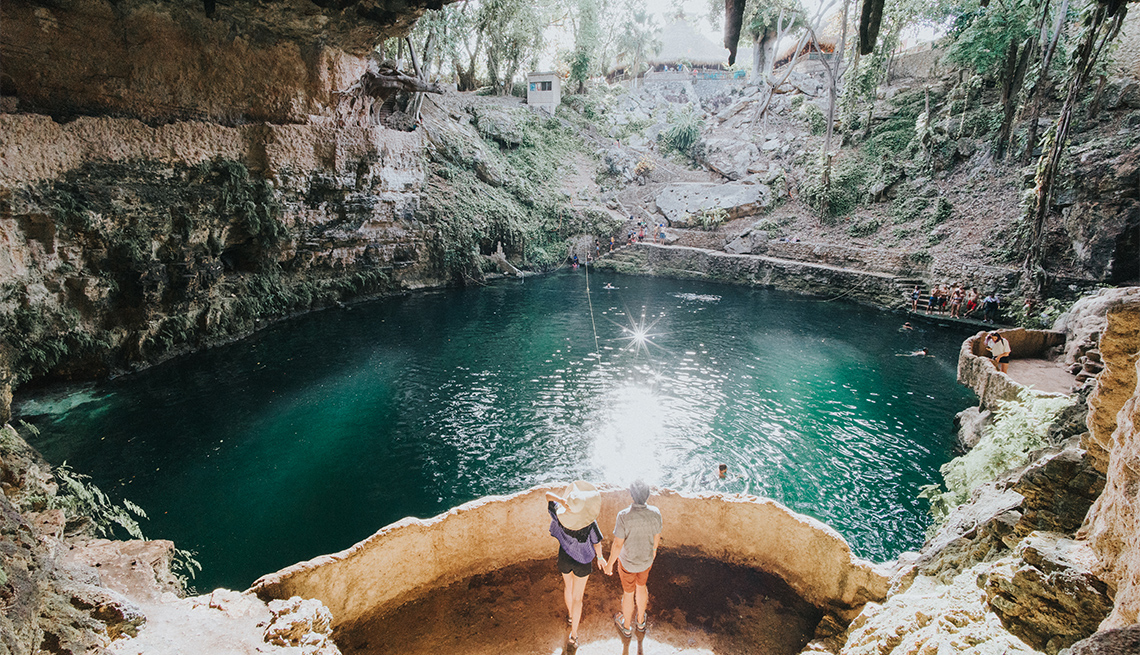
- Select a language for the TTS:
- UK English Female
- UK English Male
- US English Female
- US English Male
- Australian Female
- Australian Male
- Language selected: (auto detect) - EN
Play all audios:
SIAN KA’AN BIOSPHERE RESERVE At the end of the heavily traveled Riviera Maya from Cancún lies the inexpressibly beautiful Sian Ka’an Biosphere Reserve, a UNESCO World Heritage Site.
Encompassing jungles, beaches, savannas, freshwater and brackish lagoons, cenotes, underground rivers and virtually untouched coral reef, this is a microcosm of the entire Yucatán’s natural
world. The reserve’s more than 1.3 million protected acres — about the size of Everglades National Park — support more than 100 mammal species, including such rarities as jaguars, tapirs and
manatees. Roughly 350 bird species and 4,000 plant species also flourish here. At least 23 archaeological sites have been recorded. In keeping with the biosphere mission, much of Sian Ka’an
is off limits to visitors. For a modest fee, you can drive through an entrance arch at the end of Tulum’s hotel zone and spread a towel at any number of beaches, but you’ll need a certified
tour to sample the reserve’s remarkable diversity. Visit Sian Ka’an tours depart from the Tulum entrance, while Community Tours Sian Ka’an operates out of Muyil to the south and includes a
tour of the nearby archaeological site. Both offer a variety of tours that can include jungle treks, floating through canals carved by the Maya, boating through lagoons and wildlife
watching. (Visitors with mobility issues can opt to stay on the floats.) Hotel pickups are available at extra cost. XCARET AND ITS OFFSHOOTS Xcaret, granddaddy of the proliferating
eco-adventure parks on this part of the coast, is to the Riviera Maya what Disney World is to Orlando (with prices to match). Tributes to the Yucatán’s nature, history, gastronomy and art
amount to a crash course in local nature and culture. From diving and snorkeling to swimming with dolphins, rays or sharks, to horseback riding and floating through underground rivers,
activities cater to action junkies but also include a bat cave, an orchid nursery, a folk art museum and other exhibits. You can also ogle jaguars, manatees, sea turtles, monkeys, macaws and
flamingos, all in one day. Wheelchairs are available at the visitors center; guides can help people with mobility issues plan their day. After opening in 1990, Xcaret begat four more parks.
Xel-Há was built around the meeting of freshwater underground rivers with the Caribbean Sea. Visitors can snorkel in rivers, grottos, caves and inlets teeming with marine life, and follow
paths through the mangroves and into the jungle. Xel-Há also offers the now-obligatory zip line and a bevy of restaurants. Next came Xplor, which focuses on zip lines, jungle exploration by
amphibious vehicle, spelunking, and rafting or swimming in underground rivers. Xenses and Xoximilco are more about entertainment than nature, but Xenotes — a tour rather than a park — visits
four Ruta de Cenotes sites, each displaying a different type of cenote. For all Xcaret parks, booking online at least seven days in advance can save you 7 to 10 percent; transportation from
your hotel is also available for an additional fee.








